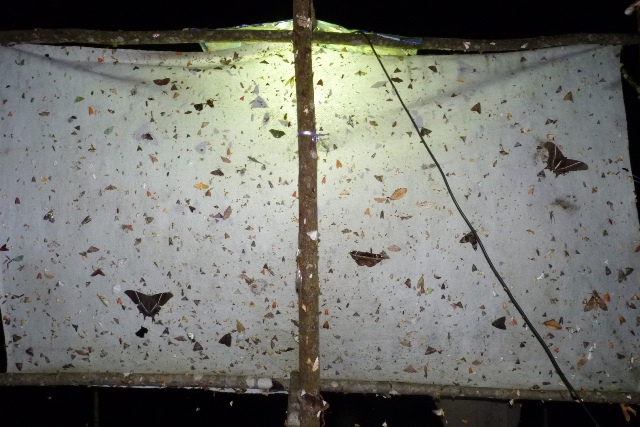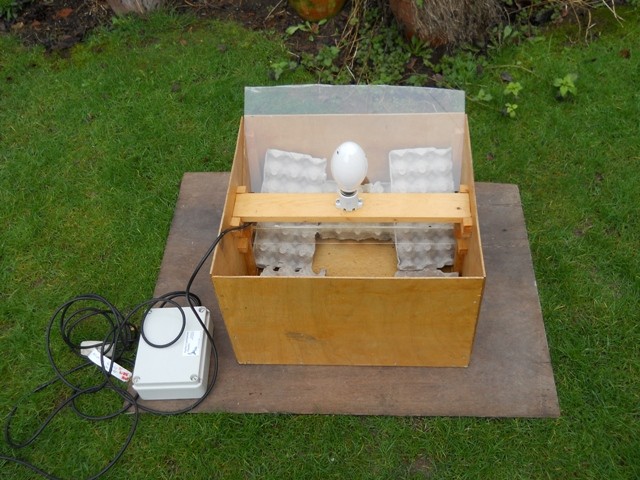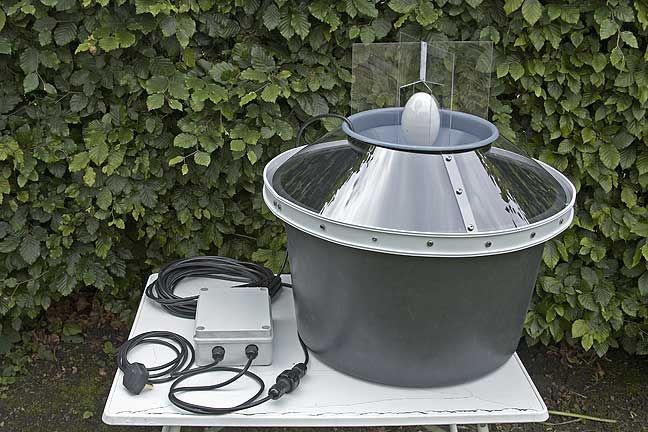To make a moth trap, you’ll need a container, a light source (such as a flashlight or UV light), white paper, tape, or glue, and an optional lure like overripe fruit or sugar water. Line the container with white paper, attach the light source inside the lid, and set up the trap in moth-prone areas.
In addition, moths are attracted to the light and can be captured inside the container. Regularly check and maintain the trap for effectiveness. Combine trap usage with good hygiene practices to control moth infestations.
What materials are essential for making a moth trap?

In the quest to tackle pesky moth infestations, the journey begins with a handful of essential materials.
Container: The container serves as the housing for your moth trap. It should be selected based on your preferences and the size of the area you want to cover. Common container options include plastic containers, glass jars, or even cardboard boxes.
Moreover, choose a container with a lid that can be securely fastened. This lid will be where you attach the light source, making it crucial for keeping moths trapped once they’re attracted to the light.
Furthermore, the container should have enough depth to accommodate moths without overcrowding, which can damage their wings.
Light Source: The light source is the core attractant in your moth trap, as moths are drawn to light. There are several options:
Flashlight: A regular flashlight can be used as a light source. Ensure it’s a white or natural light flashlight.
LED Light: LED lights are energy-efficient and can be attached easily to the lid of the container.
UV Light (Blacklight): Ultraviolet (UV) lights are highly effective in attracting moths, as many moths are particularly sensitive to UV wavelengths. You can use a dedicated UV light source for maximum attraction.
White Paper or Cardstock:
White paper or cardstock is used to line the interior of the container. It serves as a reflective surface that makes it easier for moths to spot and be drawn towards the light source.
Furthermore, the white background provides a high-contrast backdrop, enhancing the visibility of the light and increasing the trap’s effectiveness.
Tape or Glue: Tape or glue is used to secure the light source inside the lid of the container.
It’s crucial to ensure that the light source is firmly attached, as moths may generate some force when they try to reach the light. Any gaps or loose attachments can allow them to escape.
Optional Lure: While not strictly necessary, adding a lure can significantly increase the trap’s effectiveness. Lures are substances that emit odors or attractants that moths find appealing.
Common lures include overripe fruit, sugar water, or a mixture of beer and sugar. Place the lure in a separate container within the trap to prevent moths from coming into direct contact with it.
In addition, lures can be especially useful when dealing with specific moth species that are attracted to particular scents or foods.
How do you prepare the container for the moth trap?
Preparing the container for your moth trap is the crucial first step in ensuring its effectiveness.
Prepare the Container
Remove the container’s lid: Begin by selecting the container you intend to use as your moth trap. Ensure it’s clean and dry.
Gently remove the lid from the container. The lid will serve as the top part of your trap where you’ll attach the light source.
Line the inside with white paper or cardstock: To enhance the effectiveness of your moth trap, line the interior walls of the container with white paper or cardstock.
Furthermore, this white surface acts as a reflective backdrop for the light source, making it more visible to moths and drawing them towards it.
Trim the paper or cardstock to fit the container neatly, ensuring there are no wrinkles or gaps.
Secure the Light Source
Attach the light source to the inside of the lid: Place your chosen light source (e.g., flashlight, LED light, UV light) inside the lid of the container.
In addition, ensure the light source is firmly attached to the lid using appropriate fastening methods. For example, you can use adhesive putty, zip ties, or duct tape.
Ensure that the light source is oriented downward so that moths are drawn towards the opening of the container.
Ensure proper positioning at the center of the lid: Position the light source at the center of the lid to maximize its attractiveness to moths. This helps distribute the light evenly within the container.
Furthermore, ensure there are no obstructions or loose parts that could interfere with the light source’s operation.
Optional Lure (if desired)
Select a suitable lure (e.g., overripe fruit, sugar water): If you choose to use a lure, select an appropriate attractant that is known to be appealing to the types of moths you’re targeting.
Common lure options include pieces of overripe fruit, a dish of sugar water, or a mixture of beer and sugar.
Furthermore, place the lure in a separate container (e.g., a small dish or cup) within the trap. Ensure it’s positioned away from the light source to avoid interference.
Place the lure in a small container inside the trap:
Position the lure container inside the moth trap, ensuring it’s stable and won’t tip over.
The lure emits odors or attractants that complement the light source in drawing moths into the trap.
Assemble the Trap
Place the lid with the light source onto the container: Carefully position the lid containing the light source onto the container’s opening.
In addition, make sure it fits securely and creates a seal to prevent moths from escaping once they are attracted to the light.
Secure the lid with tape or glue to prevent moth escape: To ensure moths cannot escape, use tape or glue to seal the edges where the lid meets the container.
In addition, pay close attention to any gaps or seams, as moths can be surprisingly agile and persistent when attempting to escape.
Set Up the Trap
Choose a location with moth activity: The success of your moth trap depends on its placement. Select a location where you’ve observed moth activity or suspect moths to be present.
Moreover, common areas for moth activity include kitchens, pantries, closets, and outdoor gardens. Moths are often drawn to sources of light and food, so consider these factors when choosing the location.
Set the trap in the evening or at night: Moths are primarily nocturnal insects, so it’s most effective to set up your trap in the evening or at night.
Furthermore, place the trap in a dark room or area where it will be the most visible source of light to the moths. The absence of competing light sources will increase the chances of moths being drawn to your trap.
Check the Trap

Leave the trap for several hours or overnight: Allow the moth trap to sit undisturbed for an extended period. Moths are more active during the night, so this gives them time to be drawn to the light source.
Furthermore, leaving the trap overnight is often the most productive approach, as it gives moths ample opportunity to find their way into the trap.
Inspect the trap the following morning: In the morning, carefully examine the trap. Depending on the effectiveness of your trap and the level of moth activity in your area, you may find various moths inside.
Furthermore, take note of the types and quantities of moths caught. This information can be valuable in assessing the severity of your moth problem.
Release captured moths if desired: If you wish to release the captured moths back into their natural habitat, you can do so. Gently open the trap and allow the moths to fly away.
Alternatively, you can dispose of the trapped moths by placing them outdoors or in a sealed container, especially if they are pests you want to remove from your home or garden.
Maintenance:
Replace the white paper lining as needed: Over time, the white paper or cardstock lining the interior of the trap may become dirty or damaged. Replace it when it no longer provides a clean, reflective surface.
Moreover, maintaining a clean lining ensures that the trap remains effective by maximizing the visibility of the light source.
Refill the lure container (if applicable): If you’ve used a lure in your trap, monitor it regularly. The lure can lose its effectiveness as it dries out or becomes less potent.
In addition, refill the lure container with a fresh attractant as needed to continue drawing moths towards the trap.
FAQ’s
How do you make a moth trap out of egg boxes?
Making a moth trap with egg boxes involves cutting the boxes into strips, stacking them, and placing them in a container. Moths seek shelter in the crevices, making it an effective trap.
How do I get a moth out of my room?
To remove a moth, open a window or use a light source outside the room. Moths are attracted to light and will usually fly out towards it, allowing you to guide them outside.
What are the best moth traps?
The best moth traps often use pheromones to attract specific types of moths. Sticky traps with a pheromone lure are widely regarded as effective in trapping and monitoring moth populations.
What kills moth eggs and larvae?
Natural options like neem oil, diatomaceous earth, or cedar oil can kill moth eggs and larvae. Vacuuming and regularly cleaning storage areas also help eliminate them.
How do you attract and trap moths?
Moths are attracted to light. Using a light source, such as a flashlight or UV light, inside a container with a white interior can lure them in. You can enhance the trap with a lure like overripe fruit or sugar water.
How do you attract moths?
Moths are attracted to various scents. To attract them, you can use substances like ripe fruit, sugary water, or a mixture of beer and sugar. Place these attractants near the trap to lure moths effectively.
Final Words
In conclusion, creating a moth trap can be a practical and eco-friendly solution to combat moth infestations in your home or garden. By following the outlined steps and carefully selecting the materials, you can effectively capture moths and gain valuable insights into the extent of your moth problem.
Remember to strategically place your trap in areas of known or suspected moth activity, preferably during the evening or at night when moths are most active. Regularly check the trap in the morning to assess its performance and release captured moths if desired.
Additionally, maintenance, such as replacing the white paper lining and refilling the lure container (if used), is essential for long-term effectiveness.

